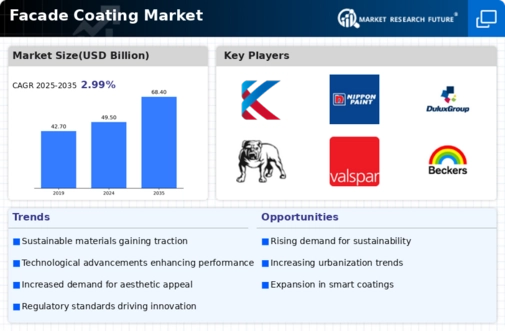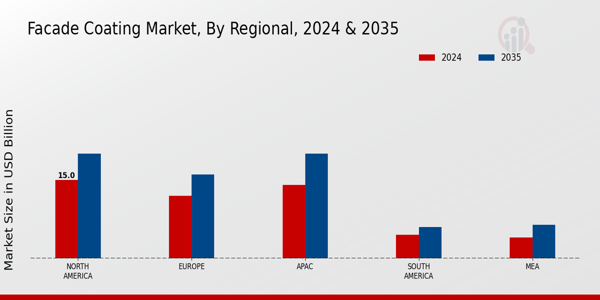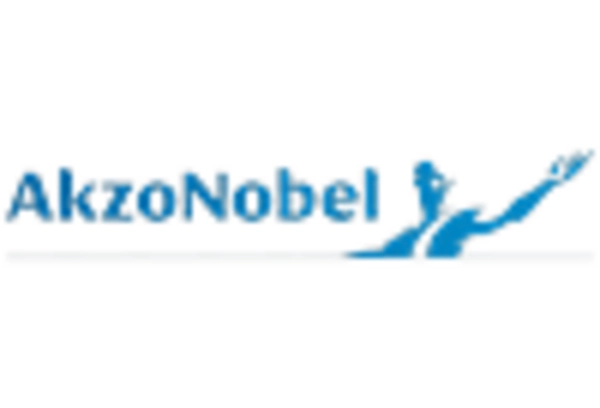Growth in Construction Activities
The resurgence of construction activities across various sectors is a notable driver for the Facade Coating Market. As urbanization continues to expand, the demand for residential, commercial, and industrial buildings is on the rise. Recent statistics indicate that the construction sector is projected to grow at a compound annual growth rate of over 5 percent in the coming years. This growth is likely to stimulate the demand for high-performance facade coatings that offer durability and aesthetic appeal. Consequently, manufacturers are focusing on developing innovative products that cater to the diverse needs of the construction industry, thereby enhancing their market presence.
Aesthetic Trends and Customization
The growing emphasis on aesthetic appeal in architectural designs is a crucial driver for the Facade Coating Market. Consumers and builders are increasingly seeking customized solutions that reflect personal style and enhance the visual impact of buildings. This trend is evident in the rising popularity of decorative facade coatings that offer a wide range of colors, textures, and finishes. Market data suggests that the demand for customized facade solutions is expected to grow, as architects and designers prioritize unique and visually striking designs. This shift towards personalization is likely to encourage manufacturers to diversify their product offerings and cater to evolving consumer preferences.
Regulatory Compliance and Standards
The Facade Coating Market is increasingly influenced by stringent regulations and standards aimed at improving building safety and environmental sustainability. Governments and regulatory bodies are implementing guidelines that mandate the use of specific materials and coatings to enhance fire resistance, durability, and environmental performance. For instance, the introduction of standards related to volatile organic compounds (VOCs) has led to a surge in demand for eco-friendly facade coatings. This regulatory landscape not only drives innovation but also compels manufacturers to invest in research and development to comply with evolving standards, thereby shaping the market dynamics.
Rising Demand for Energy Efficiency
The increasing emphasis on energy efficiency in building designs appears to be a pivotal driver for the Facade Coating Market. Facade coatings that enhance thermal insulation and reduce energy consumption are gaining traction among architects and builders. According to recent data, buildings account for nearly 40 percent of energy consumption, prompting a shift towards materials that can mitigate this impact. The adoption of energy-efficient facade coatings not only contributes to lower utility bills but also aligns with regulatory frameworks aimed at reducing carbon footprints. This trend is likely to bolster the demand for innovative facade coating solutions that meet both aesthetic and functional requirements.
Technological Innovations in Coating Solutions
Technological advancements in coating formulations and application techniques are significantly impacting the Facade Coating Market. Innovations such as self-cleaning coatings, nanotechnology, and advanced polymer formulations are enhancing the performance and longevity of facade coatings. These technologies not only improve the aesthetic qualities of buildings but also offer functional benefits such as resistance to weathering and pollution. The introduction of smart coatings that can adapt to environmental conditions is also gaining attention. As these technologies evolve, they are likely to create new opportunities for manufacturers and reshape consumer preferences in the facade coating sector.


















Leave a Comment